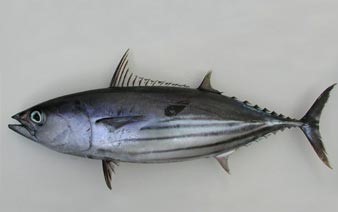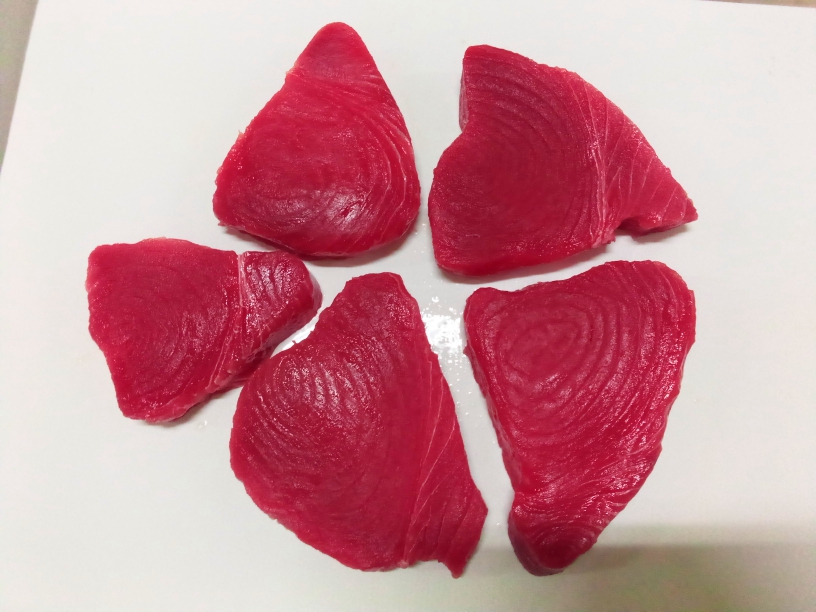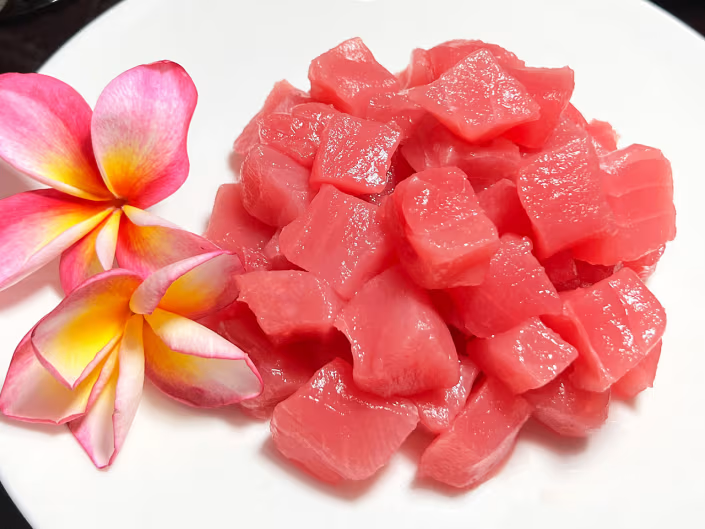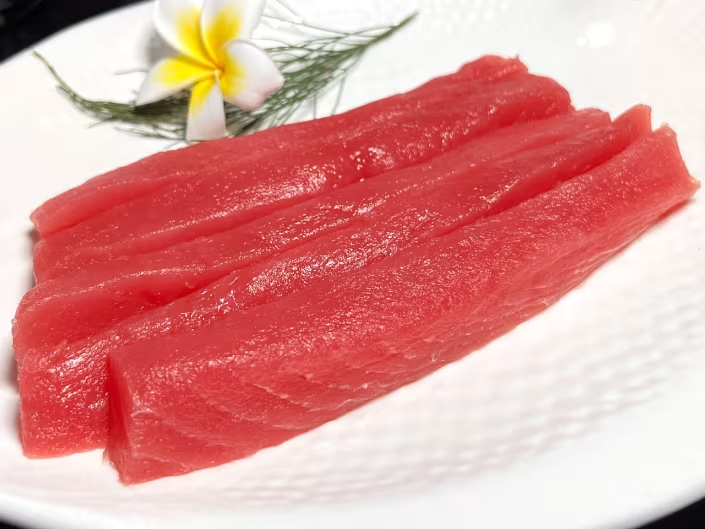| Air (Water) | 74.7 g |
| Energi (Energy) | 100 Kal |
| Protein (Protein) | 13.7 g |
| Lemak (Fat) | 1.5 g |
| Karbohidrat (CHO) | 8.0 g |
| Serat (Fibre) | 0.0 g |
| Abu (ASH) | 2.1 g |
| Kalsium (Ca) | 92 mg |
| Fosfor (P) | 606 mg |
| Besi (Fe) | 1.7 mg |
| Natrium (Na) | 202 mg |
| Kalium (K) | 227.0 mg |
| Tembaga (Cu) | 0.20 mg |
| Seng (Zn) | 1.6 mg |
| Retinol (Vit. A) | 181 mcg |
| Beta-Karoten (Carotenes) | 0 mcg |
| Thiamin (Vit. B1) | 0.35 mg |
| Riboflavin (Vit. B2) | 0.03 mg |
| Niasin (Niacin) | 6.6 mg |

Tuna
Indonesia’s tuna catch is the largest in the world at about one million tons per year or 16 percent of the world’s total tuna supply. A large part of that volume is caught by traditional pole and line or handline fishing. It makes Indonesia a global leader in one-by-one tuna fishing. To demonstrate conformity with international standards, the tuna fishing industry is actively engaged in a Fishery Improvement Plan and preparing for MSC certification.
EXPORT DESTINATIONS
As a leading tuna producing country, Indonesian tuna finds its way all over the world with main destinations:
1. Indonesian frozen skipjack > Thailand, Japan, and the Philippines.
2. Indonesian frozen tuna loins > USA, Japan, and France.
3. Indonesian canned skipjack > Japan, Middle East, and USA.
In the leading tuna markets, Indonesian is ranked among the top 10 exporters and is even the number one supplier of frozen tuna loins to the USA and of frozen skipjack to Japan.
ONE-BY-ONE TUNA FISHING METHODS
Pole and Line
Each year, as part of our commitment to a one-by-one approach, Indonesia produces more than 100,000 tons of tuna caught through pole-and-line fishing. Fishermen use the age-old combination of rod and bait to make their catch, mostly comprising skipjack, bluefin and yellowfin. This method is environmentally responsible, supports local fishermen and offers a more sustainable, less destructive alternative to longlining.
Handline
Another common method of Indonesian tuna fishing is handlining, with more than 13% of yellowfin tuna captured using this method. The Handline Yellowfin Fishery is a small artisanal fishery, accounting for approximately 2% of Indonesian tuna caught in a typical year – just one of many small-scale fisheries in the archipelago, all contributing to an improvement in how tuna is caught and sold.
Processing
There are a total of 29 tuna processing factories in Indonesian, located in Java, East Nusa Tenggara, Flores, Sulawesi, Maluku and West Papua. They process canned skipjack, along with fresh and frozen tuna loins. These products are then exported to Japan, Australia, Europe or USA. Whether cooked, pasteurized, fresh, frozen or canned, all shipments of Indonesian tuna fully comply with international food safety requirements.
| Air (Water) | 74.7 g |
| Energi (Energy) | 100 Kal |
| Protein (Protein) | 13.7 g |
| Lemak (Fat) | 1.5 g |
| Karbohidrat (CHO) | 8.0 g |
| Serat (Fibre) | 0.0 g |
| Abu (ASH) | 2.1 g |
| Kalsium (Ca) | 92 mg |
| Fosfor (P) | 606 mg |
| Besi (Fe) | 1.7 mg |
| Natrium (Na) | 202 mg |
| Kalium (K) | 227.0 mg |
| Tembaga (Cu) | 0.20 mg |
| Seng (Zn) | 1.6 mg |
| Retinol (Vit. A) | 181 mcg |
| Beta-Karoten (Carotenes) | 0 mcg |
| Thiamin (Vit. B1) | 0.35 mg |
| Riboflavin (Vit. B2) | 0.03 mg |
| Niasin (Niacin) | 6.6 mg |
 |
Cooked/Pasteurized |
 |
Fresh |
 |
Frozen |
 |
Canned |














